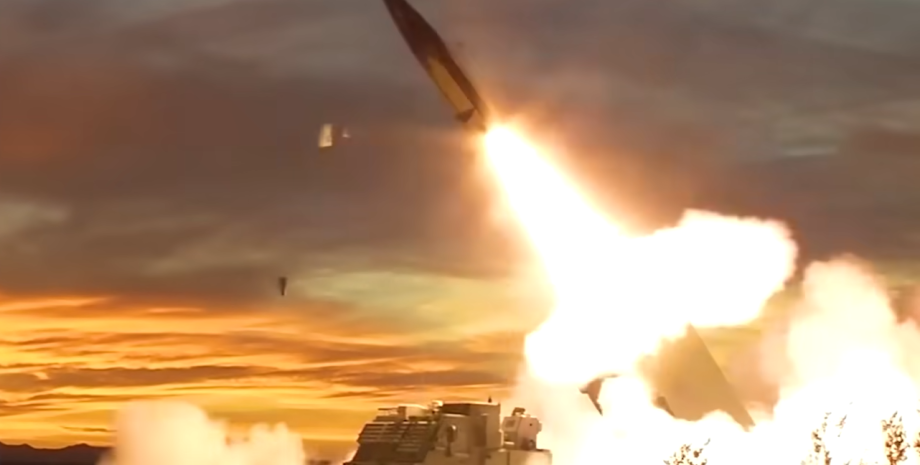
 By Victor Duda
By Victor Duda
This decision marked the mitigation of the ancient ban on the support of Kiev, which was introduced due to the fears of the expansion of the war. However, Ukraine soon stated that this is not enough. About it writes American tabloid Defense News. "Isn't that enough," President Volodymyr Zelenskyy said at a press conference in Singapore a few hours after meeting with US Secretary of Defense Lloyd Austin.
According to the publication, Zelensky's comment illustrates a longer -term problem for Washington: seeking to avoid escalation, the administration retains certain types of weapons requested by Ukraine, but then changes the course. This leads to constant changes in policy, which often leaves Kiev dissatisfied - because one change in rules can lead to even greater concessions in the future. Limited powers given to the White House to conduct fire in Russia are already beginning to expand.
Analysts believe that this can have a significant impact on the course of combat. "It can really change the course of war," says George Barros, the leader of the group from Russia and geospatial intelligence at the Institute of War. The path to changing politics began a few weeks before Zelensky's comments in Singapore. In May, Russia launched a new offensive near Kharkiv, the second largest city of Ukraine, located only 20 miles from the Russian border.
Due to the restrictions on the use of Western weapons, Russia could fire from Russia without significant response. Ukraine invited permission to fire in Russia, and Washington granted this request after some European partners supported it. However, this opportunity was limited: Ukraine could shoot American weapons, for example, from a highly mobile artillery missile system (HIMARS) with a range of almost 50 miles to protect itself around Kharkiv.
But she was still forbidden to use long -range missiles, such as ATACMS with a radius of about 186 miles, for blows for goals deeper in Russia. A few weeks after the change, US officials began to attribute the stabilization of the front line to these new rules. When Austin visited NATO headquarters in June, members of the American delegation celebrated a positive mood. "I see the slowdown in the promotion of the Russians and stabilize the front area," Austin said.
However, some analysts are skeptical of this opinion. Michael Kafman, who studies the Ukrainian war at the Carnegie Foundation for International Peace, believes that the Russian offensive has already begun to lose the pace by the time of its policy. "The Russian offensive has reached the climax before changes in politics came into force," he said. According to Tabloid, the shelling of the Russian territory creates strategic dilemma for Russia.
According to current policy, Russian troops must be dispersed at a greater distance from each other to avoid blows. This will complicate new offensive operations. However, this is a limited advantage, says Barros from the Institute of War Study. "In the long run, it will not be of great importance," he said. A number of officials of the United States and other countries insist on abolishing the rest of the restrictions on Ukraine's actions, including NATO Secretary General Jens Stoltenberg.
Shortly before the June meeting in Brussels Stoltenberg, he went to journalists in the hall headquarters and expressed his thoughts on strikes in Russia. He noted that the proximity of the border and the front line to Kharkiv complicates the defense of Ukraine if it cannot attack the territory of Russia. Stoltenberg stressed that Ukraine should not fall out of the burden to avoid escalation.
"Ukraine has the right to strike on military facilities in Russia as part of self -defense, and we have the right to support them in this," Stoltenberg said. The US Congress, including prominent Democrats, also urge Biden administration to weaken the restrictions for Ukraine and is supported by many European partners. "Russia is attacking from Russia, and we impose restrictions on Ukraine," said the Defense Minister Lithuania Laurinas Kashchuasn in an interview with Defense News.
"It's an absurdity. " However, as the publication notes, it remains unclear what restrictions exist, judging by several recent statements of US officials. When a representative of the US defense department was asked to clarify the US policy on striking Russia, he paused and opened a folder with records. Reading, he remembered such abstracts as "limited", "military goals", "only across the border. " "There are no more details," the official said, causing laughing at reporters.
At a press conference on the same day, Austin answered questions about a policy concerning the northeast of Ukraine. "The ability to fire in the Kharkiv region is what it is," he explained. A few days later, in an interview with PBS, US National Security Advisor Jake Sullivan stated that the permission to strike was extending to all places where the Russian forces cross the border from the Russian side to the Ukrainian. "It's not about geography," Sullivan added. "It's about common sense.
" Dmitry Klimenkov, Deputy Minister of Defense of Ukraine for Procurement, stated that politics "was completely clear". He refused to comment on whether the policy should be softer. In the matter of long -range missiles, such as ATACMS, Baiden administration has set a red line, but it has its reasons.
The United States want Ukraine to focus its actions in response to the invasion of Russia, and the ban on the shelling of the territory of Russia forces Ukraine to focus on the "melee" around Kharkiv and other areas of the front. There is also an escalation factor: Russia has nuclear weapons and threatened its use, although this has not happened. The Russian government can also bother the United States and their allies by supporting fighters or arranging attacks in European cities.
Fears about a deeper war influenced the policy of Biden's administration since the invasion of two years ago. But this concern has changed to a better understanding of the Pentagon of Russia's readiness for escalation. "The risk of escalation is not as high as it could seem at the beginning," said General KK Brown, a senior officer of the US Armed Forces, on a roundtable with reporters in March. "You understand more over time.
" Subsequently, despite the threat of escalation, Ukraine has received more powerful weapons and more powers for its use. In March, the Baiden administration sent a long -range ATACMS long -range missiles. Ukraine uses them, for example, to strike batteries in Crimea, captured by Russia in 2014. Ukraine's ability to impress Russian objects in Crimea forced Moscow to move most of its naval fleet.
The Analyst of the Barros Institute of War believes that similar actions are possible in other places, if the ban on long strikes in Russia is lifted. For example, Russia may be forced to disperse its aircraft and electronic warfare at a greater distance. Russia will also not be able to attack Ukrainian cities so often, knowing that the Ukrainian forces will not open fire. "Russia is constantly fire, knowing that Ukraine will not answer," Zelensky said at a press conference in Singapore.










All rights reserved IN-Ukraine.info - 2022